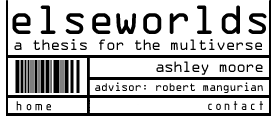

| statement | introduction | site | program | methodology | precedents | development | |
|
introduction The notion of reuse naturally includes the adaptation of previous building. This thesis proposes the anticipation of reuse in new construction, and attempts to provide for potential scenarios of expansion, contraction, addition, subtraction, and division. If these possibilities are not considered to be invasions, but rather are welcomed, then the longevity and viability of the building is increased. The 'discovery' of a site is actually the rethinking of what specific sites are useful. This thesis seeks to understand what will naturally occur at a particular site when programs are not forced into neighborhoods, and when programs expire and leave the 'shell' abandoned. By reinterpreting the notion of program, this thesis proposes the development of an architecture that is independent of all programming, yet can accommodate as many programs as possible. This is related to the notion of the anticipation of a future reuse; by planning for both possible and improbable contingencies, a versatile and malleable building will be more enticing for reoccupation. Regardless of the site or program, the best 'green' technology will be employed. This technology can not be a surface treatment that is applied as an afterthought; it must be an integral system, embedded in the organism of the building, where it may function on a metabolic level. The matrix of these methods of research - with responsible terms of program, site, resources, and technology - will bring models of efficiency that shall enable the urban fabric of Los Angeles to be patched, sutured, and even rewoven; this thesis provides typologies with, even at the pace of one building at a time, can rejuvenate the city.thesis content written by and property ashley moore, 2000-2015 valid: xhtml css |
|||||||